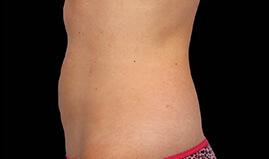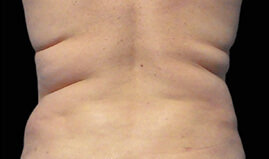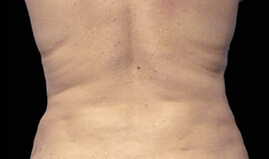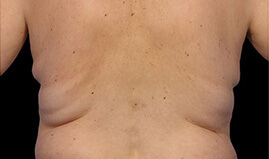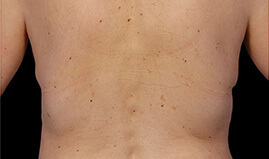Coolsculpting is one of the fastest growing non-surgical fat removal procedures on the market. It delivers reliable results for almost all patients. You may have heard some recent media buzz in the last year surrounding a very rare complication of CoolSculpting, called paradoxical adipose hyperplasia (PAH). We have seen an increase in questions about this side effect and we completely understand where the concern is coming from. So, let’s talk about what PAH is, how common it is, and the treatment options in the rare chance it does occur, and, hopefully put some of those fears to rest.
Contents
What is Paradoxical Adipose Hyperplasia (PAH)?
As the name suggests it is an unexpected and “paradoxical” result of CoolSculpting where there is overgrowth of fatty tissue, rather than a reduction. The treated area will become slightly hardened and enlarged. It has often been described to look like a stick of butter – similar to the shape of the applicators.
How Common is PAH?
According to an early study conducted by JAMA Dermatol in 2014, the incidence rate of PAH is about 0.0051%, or 1 in 20,000 treated patients. Males have a slightly higher risk, but incidence is still quite rare.
More recent data from the CoolSculpting manufacturer states the risk is closer to 1 in 4,000, or 0.025% incidence. While a bit higher than the study mentioned above, it is still a very low occurrence rate.
How Do You Know if You Have PAH?
Symptoms of PAH will appear within a few days to weeks after the treatment. The area will feel thicker or firmer and may be slightly painful to the touch. PAH typically fully presents a few months after treatment.
Who is Most Likely to get PAH?
A study published in the Aesthetic Surgery Journal determined a few risk factors for PAH. Although still rare for these subsets, there was a slight increase noted in this study for: males, when larger applicators are used, when treating the abdominal area, Hispanic origin, history of previous CoolSculpting, and genetic factors.
What is the Treatment for PAH?
The one – shall we say – *good* thing about PAH is that it is treatable. The typical treatment for a case of PAH after CoolSculpting is liposuction – which is generally very effective in remediation.
The DaVinci Body Sculpting Difference
We are partnered with one of the top liposuction surgeons in the country so that IF any of our clients happen to experience this rare side effect, we can ensure they receive the best quality of care to remedy PAH.
Like any cosmetic treatment or procedure there is always some level of risk involved. This makes it that much more important for you, the patient, to be informed so that you can make the best decision for you. BUT, that’s also why it’s SO important to not just go with the cheapest or closest provider. You want to find a provider that will be transparent with you and never over recommend or oversell a treatment simply to make more money.
Our clinicians view CoolSculpting as a work of art and we take the safety and happiness of our clients seriously. We will never oversell treatments. If we don’t believe the treatment is safe for you or we do not feel it would provide you with optimal results, we will not sell it. In fact, we have actually lost clients for declining their requests for additional treatments – and that’s okay.
In conclusion, PAH is a very rare side effect of CoolSculpting and it is treatable with liposuction. We stand by the CoolSculpting technique and believe the results we have seen firsthand for thousands of our clients speak for themselves. We love CoolSculpting and we love and care about our clients! If you ever have questions or concerns regarding CoolSculpting we are happy to talk it through with you anytime – that’s what we are here for!

